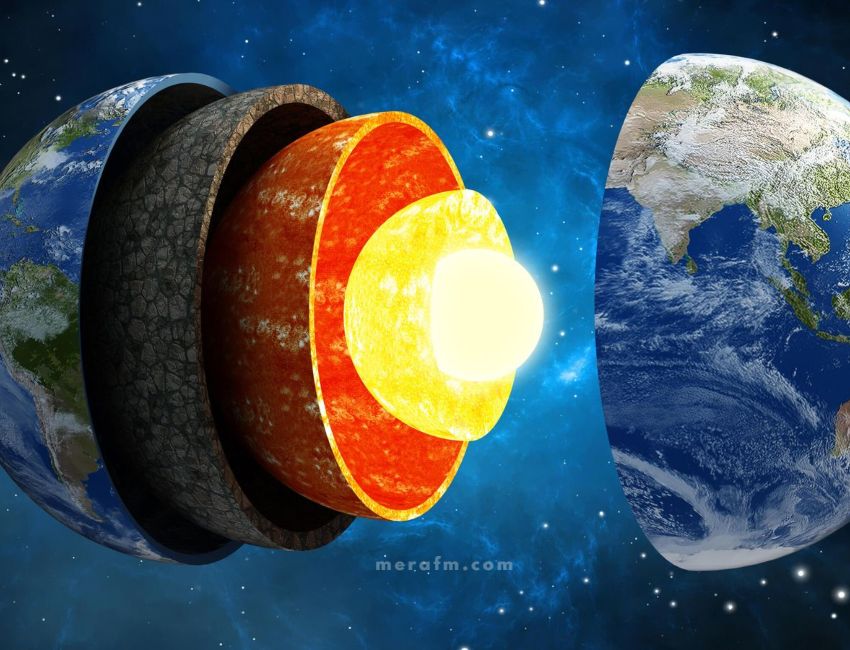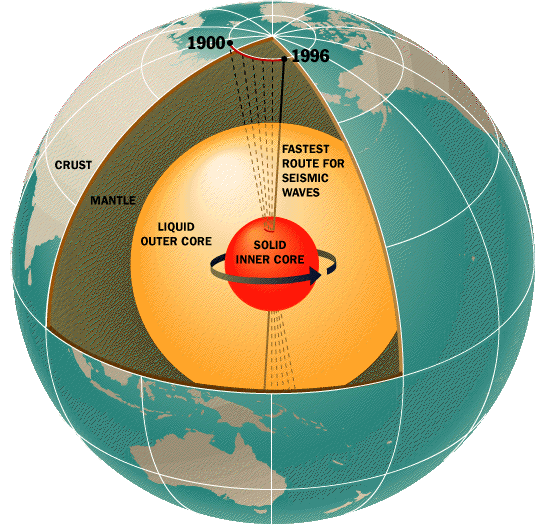
Earth’s inner core may have stopped turning and could go into reverse
Earth’s core stops rotating!
According to new research, the inner core of the Earth’s rotation may have stopped or even reversed.

The crust, mantle, and inner and outer cores make up the Earth. The liquid outer core separates the solid inner core from the semi-solid mantle. This allows the inner core to rotate at a rate different from the Earth’s rotation. The solid inner core is located about 3,200 miles below the Earth’s crust.
What is happening with mother Earth?
Earth’s core is roughly the size of Mars and has a radius of close to 2,200 miles. It makes up about one-third of the mass of the planet and is primarily composed of iron and nickel.
Yi Yang, an associate research scientist at Peking University, and Xiaodong Song, chair professor at Peking University, used analysis of seismic waves from earthquakes that have passed through the Earth’s inner core along comparable paths since the 1960s to determine how quickly the inner core is spinning. Their findings are available in the Nature Geoscience Journal.
The change in Seismic records
They claimed what they discovered was unexpected. Seismic records, which had previously changed over time, had hardly changed as of 2009. They claimed that this indicated a pause in the inner core rotation.
The inner core may be experiencing a turning-back, according to their study. “We show surprising observations that indicate the inner core has nearly ceased its rotation in the recent decade,” they wrote.
“When you look at the decade between 1980 and 1990 you see clear change but when you see 2010 to 2020 you don’t see much change,” added Song.
Magnetic field and deep-earth process
The magnetic field produced by the outer core propels the spin of the inner core. Which is counterbalanced by the mantle’s gravitational pull. Understanding the rotation of the inner core may help us understand the interactions between these layers and other deep-earth processes.
Also Read: The tech companies mass layoff in 2023
However, Hrvoje Tkalcic, a geophysicist at the Australian National University who was not involved in the study, noted that there is disagreement regarding the speed of this rotation and whether it varies.
“The inner core doesn’t come to a full stop,” he said. The study’s finding, he said, “means that the inner core is now more in sync with the rest of the planet than a decade ago when it was spinning a bit faster.”
“Nothing cataclysmic is happening,” he added.
Also Read: Twitter’s paid blue tick re-launches after pause
Song and Yang argue that, based on their calculations, a small imbalance in the electromagnetic and gravitational forces could slow and even reverse the inner core’s rotation. They believe this is part of a seven-decade cycle. Moreover, the turning point prior to the one they detected in their data around 2009/2010 occurred in the early 1970s.
Have something to add to the story? Comment down below!




